(1902-1942)
" . . . George was a handsome, intelligent, slightly dilettantish young man, the favorite of his mother, whose tastes in art and collecting he had inherited. There was much talk about his private life. Kaiser Wilhelm II's grandson Prince Louis Ferdinand, described him as 'artistic and effeminate' and noted his use of strong perfume. Stories circulated about an alleged affair George had supposedly had with a black actress, but this was nothing compared to the scandal which arose when one of his young male lovers apparently tried to blackmail him. The Prince of Wales had to journey to Paris to try to smooth over the situation and retrieve several expensive Tiffany and Cartier cigarette boxes and lighters that had been personally inscribed by the Prince to his boyfriend. Worse still for the Royal Family, George was known to have a problem with drugs, especially cocaine and morphine, an addiction which the Prince of Wales eventually helped him to overcome. All of these scandals made him introspective, and Wallis grew very fond of him." (The Duchess Of Windsor)
A string of affairs with men and women.
"Even before he married, the Duke of Kent was said to have had a 'string of affairs' with men and women. One wag of the time commented: 'He is not safe in taxis with either sex.' His alleged conquests, before and after his marriage, were many and varied. The more noted of his dalliances were rumored to include African-American cabaret singer Florence Mills, banking heiress Poppy Baring, controversial socialite Margaret Whigham (later Duchess of Argyll), Barbara Cartland and musical star Jessie Matthews. There were entanglements too with a distant cousin, Louis
Ferdinand, Prince of Prussia and art historian and spy Anthony Blunt." (Express)
" . . . The better known of his female partners included the African-American cabaret singer Florence Mills, banking heiress Poppy Baring, Duchess of Argyll and Jessie Matthews, and in the late 1920;s, the British historian Lucy Moore. His male lovers included Noel Coward, which became a nineteen-year affair. Also linked to the Duke was Indira Raje, the Maharani of Cooch Behar. He was also involved in other scandals involving young men in Paris, one of which led to blackmail; he was also addicted to morphine and cocaine." (The Duke of Windsor's Last Secrets: 157)
His long list of sexual conquests.
" . . . The better known of his female partners included the African-American cabaret singer Florence Mills, banking heiress Poppy Baring, Duchess of Argyll and Jessie Matthews, and in the late 1920;s, the British historian Lucy Moore. His male lovers included Noel Coward, which became a nineteen-year affair. Also linked to the Duke was Indira Raje, the Maharani of Cooch Behar. He was also involved in other scandals involving young men in Paris, one of which led to blackmail; he was also addicted to morphine and cocaine." (The Duke of Windsor's Last Secrets: 157)
His long list of sexual conquests.
"George had a string of affairs, reputedly with both men and women, both before and after his marriage to Princess Marina of Greece and Denmark. It's reported that his long list of sexual conquests included writer Barbara Cartland, playwright Noel Coward and the banking heiress Poppy Baring." (Express)
Catholic sexual tastes in flagrant affairs.
" . . George was renowned in Court circles to have been catholic in his sexual tastes. He had had flagrant affairs with Noel Coward and 'Chips' Channon, the black cabaret singer Florence Mills, the singing star Jessie Matthews, the author/socialite Barbara Cartland, who would later claim that her daughter Raine (Diana, Prince of Wales's step-mother) might well have been his child, and the Maharanee of Cooch Behar. George was also rumoured to have had more discreet liaisons with his cousin Prince Louis Ferdinand of Prussia and Elizabeth's distant cousin, Anthony Blunt, who would later become Surveyor of the Queen's Pictures and be stripped of his knighthood when he was exposed as a Soviet spy." (The Queen Mother: The Untold Story of Elizabeth Bowes-Lyon, Who Became Queen Elizabeth the Queen Mother)
Catholic sexual tastes in flagrant affairs.
" . . George was renowned in Court circles to have been catholic in his sexual tastes. He had had flagrant affairs with Noel Coward and 'Chips' Channon, the black cabaret singer Florence Mills, the singing star Jessie Matthews, the author/socialite Barbara Cartland, who would later claim that her daughter Raine (Diana, Prince of Wales's step-mother) might well have been his child, and the Maharanee of Cooch Behar. George was also rumoured to have had more discreet liaisons with his cousin Prince Louis Ferdinand of Prussia and Elizabeth's distant cousin, Anthony Blunt, who would later become Surveyor of the Queen's Pictures and be stripped of his knighthood when he was exposed as a Soviet spy." (The Queen Mother: The Untold Story of Elizabeth Bowes-Lyon, Who Became Queen Elizabeth the Queen Mother)
A string of affairs both before and after his wedding.
" . . . Although George married Princess Marina of Greece in 1934 . . ., he conducted a string of affairs both before and after his wedding, with men as well as women. His lovers included the American cabaret artiste Florence Mills, the heiress Poppy Baring, the singer Jessie Matthews and Margaret, Duchess of Argyll . . . Among the men, George was alleged to have had an affair with Noel Coward, as well as Jorge Ferrara, the bisexual son of the Argentine ambassador, whom he joined in a menage a trois with the American socialite Kiki Preston, a drug addict who was nicknamed 'the girl with the silver syringe'. (New Statesman)
A long list of glamorous & famous lovers.
A long list of glamorous & famous lovers.
"He acquired a long list of glamorous and famous lovers. The stunning banking heiress Poppy Baring was an immediate favourite. There was talk of marriage in 1927, until George V found out and expressed his disapproval. A string of starlets were happy to entertain him, all dewy-eyed, curvaceous and irresistible. He had fund with actress and singer Jessie Matthews, and with the American Florence Mills, warm and sultry from cabaret. Many debutantes too required his attention, including Margaret Whigham, later the Duchess of Argyll, and Lady Alexandra Curzon, who is said to have---temporarily---broken Prince George's heart by marring the Prince of Wales's best friend, Edward 'Fruity' Metcalfe." (Princes at War: 27)
Sex partners & drugs.
" . . . He was also involved in other scandals involving young men in Paris, one of which led to blackmail; he was also addicted to morphine and cocaine." (The Duke of Windsor's Last Secrets: 157)
"Occultist, drug user, bisexual pro-Nazi, close to Windsor. Went to Germany with de Ropp. Died 25th August 1942 Scotland. He was romantically linked in the press with Mrs. Bill Allen in 1937. He was lover of Lois Sturt the actress, who married Morgan, Lord Tredegar and then died in Hungary. He fell under the spell of Baba Curzon in 1922 but she married Fruity Metcalfe in 1925. He dressed in drag with Noel Coward and was a lover of his life. He wanted to marry Helen 'Poppy' Baring in 1928 but George V vetoed this and sent him away with his brother the Duke of Windsor. He stayed in Kenya with Happy Valley Kiki Preston and hooked him on Heroin (sic). Another lover was Flo Mills." (Churchill's Secret Enemy: n.p.)
Character or persona.
" . . . He was considered handsome, debonair and artistically gifted; he had an instant rapport with the public that set him apart from other royals. The crowds just loved him and he, blushingly, returned their adulation. Some observers also described him as cultivated, effeminate and smelling too strongly of perfume; he was unarguably the most interesting intelligent and cultivated member of his generation of the Royal Family. But like many of the 'Royal males' he was bi-sexual having affairs with both men and women..." (The Duke of Windsor's Last Secrets: 157)
The most artistic & cultured of George V's children.
" . . . The Duke of Kent was the most cultured and artistic of all the children of George V: he played the piano and knew a great deal about music and antiques. He had also been very kind to John, the youngest child of the family, who was mentally handicapped and epileptic. John was kept away from the rest of the family and from the world in a cottage in Sandringham, until his early death in 1919. George had visited him every day when was at Sandringham, when he was not, he regularly sent him postcards." (The People's King: the True Story of the Abdication)
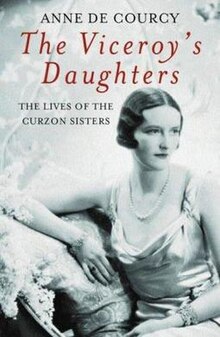 |
| Lady Alexandra Curzon @Wikipedia |
His lovers were:
1) Alexandra Curzon (1904-1995)
She was the first love of Prince George, Duke of Kent...." (Wikipedia)
""Baba" inherited from her father his commanding presence and physical attraction, a good deal, too, of his intelligence and administrative capacity and a measure of his imperiousness. She inherited beauty and money from her mother, Mary Leiter, the daughter of a Chicago store and property magnate, Levi Leiter, of Lutheran stock from Pennsylvania. Mary Leiter Curzon died aged only 36 just two years after Baba was born, leaving Curzon with three daughters, Irene, Cynthia and Baba. The sisters were brought up in grand houses, Hackwood Park and Montacute; their London home, in Carlton House Terrace, became a centre of smart social life after Curzon's second marriage in 1917 to another American, Grace, widow of Herbert Duggan." (Independent)
" . . . Supposedly, Channon was on intimate terms with not only Prince Paul but the Duke of Kent as well. Chips and the Duke of Kent, younger brother of King George VI, coincidentally, had sons born on the same day in 1935, who grew up together, but what went on between the fathers, in the privacy of the royal bedroom, is still a matter of speculation." (Esoteric Curiosa)
5) Ethel Margaret Whigham, Duchess of Argyll.
5) Ethel Margaret Whigham, Duchess of Argyll.
6) Florence Mills.
African-American cabaret singer
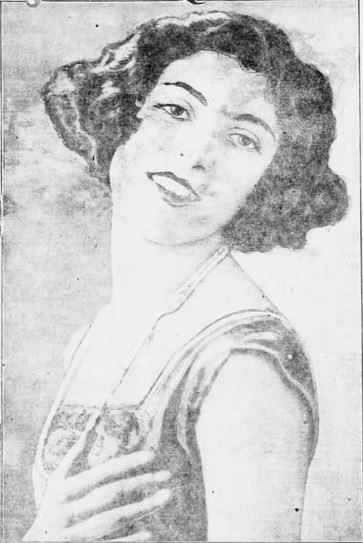 |
| Poppy Baring, 1925 |
7) Poppy Baring (1901-1980)
Lover in 1927.
American banking heiress.
Daughter of Sir Godfrey Baring, 1st Baronet of Nubia House, Cowes, Isle of Wight, and Eva Hermione Mackintosh.
Wife of William Piers "Peter" Thursby, an Eton cricketer, son of Reverend Harvey William Gustavus Thursby and Margaret Emily Mount, mar 1928.
"In 1921 Albert, Duke of York (the future king George VI), fell in love with Baring, but she had the reputation of being "fast" and fun-loving. He proposed marriage, she accepted, but Queen Mary made it clear that the match was impossible. Six years later, Baring had an affair with Prince George, Duke of Kent,[6] but this time it was the King, George V, who objected to their romance because Poppy was not "suitable". Nevertheless, Poppy Baring was Prince George's mistress for many years." (Wikipedia)
8) Indira Raje, Maharani of Cooch Behar.
9) Jessie Matthews.
Musical star
10) Jorge Ferrara.
Son of Argentine ambassador
11) Kiki Preston (1898-1946)
American socialite
Lover in 1928.
Daughter of: Edward Erskine Gwynne, Sr. & Helen Steele.
Wife of:
1. Horace Bigelow Allen (d.1961), mar 1919, div 1924
2. Jerome Preston (1897-1934) mar 1925
" . . . Alice was also seen regularly with the club's most illustrious members, Edward, Prince of Wales . . . and his decadent younger brother, Prince George, the future Duke of Kent. . . Known as 'the girl with the silver syringe', she was the woman Prince George had fallen in love with on a trip to Kenya in 1928. . . ." (The Temptress: the Scandalous Life of Alice, Countess de Janze)
12) Lois Sturt, Viscountess Tredegar (1900-1937)]
"Before her relationship with the King, Mrs Keppel had been the mistress of Lord Alington. Also in the photograph is a very young Lois Sturt. In later years she would have an affair with Prince George (who would become King George VI) [sic]. He had a mind to marry her but her "fast" reputation had doomed them in the eyes of the King (Edward VII). The sauce of the goose could obviously not be that of the gosling!" (Duke)
13) Ludwig Ferdinand von Preussen (1907-1994)
14) Noel Coward.
British actor
Lover in 1923-1942.
Lover in 1923-1942.
"In 1923 during the West End run of his musical revue London Calling, the 24-year-old Noel Coward encountered another young man, who was to play a significant role in his life. With sexual relations between men remaining a criminal offence in Britain, until 1967, the truth about their relationship could never become public knowledge in either of their lifetimes. The dashing fellow who had caught Coward's eye was none other than His Royal Highness Prince George, the fourth son of the reigning monarch, King George V. Z voracious bisexual who dabbled in the use of both cocaine and morphine, the Prince was instantly drawn to the urbane playwright . . . They began a clandestine affair, one which resume intermittently over the two decades which followed their first meeting. While Prince George maintained a career in the Royal Navy until 1929, Coward became an international celebrity . . . At the same time, both men continued to have other lovers. . . ." (A Sketch from the Past)
"Most repeated are claims he had a 19-year affair with Noel Coward but these were denied by the playwright's long-term partner, Graham Payn. 'We had a little dalliance,' Coward would admit to historian Michael Thionton." (Express)
"In this guise of world-weary mondaine, then, Elizabeth cast a blind eye to Coward's much-trumpeted (within their social circle) but brief encounter with her brother-in-law. Prince George was a part of the royal set that enjoyed the hedonism of the time other members included the Mountbattens, Dickie and Edwina; and the then Prince of Wales himself, of course all of whom have long been rumoured to have had homosexual inclinations. It was the Prince of Wales who rescued his brother George from drug addiction, and helped hush up an affair that George had had with a boy in Paris, after his "fling" with Coward. The rumours about the affair between the playwright and the prince continued even after the latter's tragic death in a flying accident during the Second World War: one mutual friend told Coward, "You can't be the Dowager Duchess of Kent, you know". Yet, whatever Queen Elizabeth thought of this alleged affair, or knew of its details, played out so close to home, it did not affect her affection for Coward." (Independent)
15) Violet Evans.
"But they soon soon had an even bigger problem to deal with. In 1926, it was discovered that one of Georgie's female lovers was pregnant. At first, suspicion fell on Kiki as the mother, but Wilson believes it was another lover, Violet Evans, a beautiful socialite daughter of a wealthy Canadian coal merchant (Press Reader)

 |
| Edward, Duke of Kent |
(1787-1820)
Duke of Kent & Strathern
& Earl of Dublin 1799.
Commander-in-Chief of British forces in Canada 1799; Governor of Gibraltar 1802.
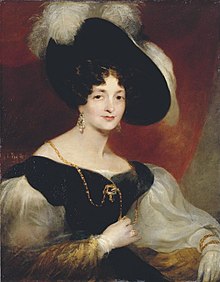 |
| Victoria of Saxe-Coburg-Saalfeld by Richard Rothwell, 1832 |
Husband of Princess Victoria of Saxe-Coburg-Saalfeld, mar 1818.
" . . . When he was an elderly fifty with a pot belly and dyed receding hair, Edward, Duke of Kent, married Victoire, Princess of Leiningen, aged thirty-two. A love match it was not, still less a meeting of minds. She spoke no English, he no German. . . Victoire was the sister of Leopold, Prince Consort and husband of the late Princess Charlotte, and of Ernest, Duke of Saxe-Coburg, who was the father of her nephew, and future son-in-law, Prince Albert. She was of that small Bavarian ducal family, of Coburg, which was destined to sire Emperor Maximilian of Mexico, Queen Isabella of Brazil, King Pedro of Portugal, the last tsar and tsarina of Russia, the Kings of Spain, Bulgaria and Prussia." (The Victorians: 24)
" . . . He looked down at his wife's pale face, lit by the gentle spring sun, and beamed. He was fifty-one and penniless: it was something of a miracle that he had found such a young, pretty, amiable wife. The thirty-two-year-old Princess Victoire of Saxe-Coburg-Saalfeld, a tiny principality much diminished by Napoleon's land grad in south Germany, was cheerful, short, and plump, with brown ringlets and apple-red cheeks. Recently widowed, Victoire had two children of her own, and had taken some persuading before agreeing to marry the Duke of Kent. But they had quickly settled into a fond companionship, and Victoire soon became pregnant." (The Prince and His Lady: 6)
" . . . When he was an elderly fifty with a pot belly and dyed receding hair, Edward, Duke of Kent, married Victoire, Princess of Leiningen, aged thirty-two. A love match it was not, still less a meeting of minds. She spoke no English, he no German. . . Victoire was the sister of Leopold, Prince Consort and husband of the late Princess Charlotte, and of Ernest, Duke of Saxe-Coburg, who was the father of her nephew, and future son-in-law, Prince Albert. She was of that small Bavarian ducal family, of Coburg, which was destined to sire Emperor Maximilian of Mexico, Queen Isabella of Brazil, King Pedro of Portugal, the last tsar and tsarina of Russia, the Kings of Spain, Bulgaria and Prussia." (The Victorians: 24)
" . . . He looked down at his wife's pale face, lit by the gentle spring sun, and beamed. He was fifty-one and penniless: it was something of a miracle that he had found such a young, pretty, amiable wife. The thirty-two-year-old Princess Victoire of Saxe-Coburg-Saalfeld, a tiny principality much diminished by Napoleon's land grad in south Germany, was cheerful, short, and plump, with brown ringlets and apple-red cheeks. Recently widowed, Victoire had two children of her own, and had taken some persuading before agreeing to marry the Duke of Kent. But they had quickly settled into a fond companionship, and Victoire soon became pregnant." (The Prince and His Lady: 6)
 |
| Edward, Duke of Kent |
Physical appearance & Personal Qualities.
"We have now the citizenry of Halifax of the 1790s, who were in turn about to meet His Royal Highness Edward Augustus, Prince of Great Britain, Duke of Brunswick and Luneburg and fourth son of the reigning king, George III. When Edward arrived in Halifax he was twenty-six-and-a-half years old and in the prime of life. A naval lieutenant described him in 1790 as 'one of the best looking men I ever beheld; he was upwards of six feet in height, remarkably erect and well proportioned . . . a handsome manly cast of countenance.' As well as being a British prince and a German duke, he was a major general (since October 1793), Colonel of the 7th Regiment of Foot (Royal Fusiliers), and a Knight of the Garter. . . ." (Prince Edward's Legacy: The Duke of Kent in Halifax: Romance and Beautiful Building: 19)
Isolated from" his family in Geneva, Edward had grown to be a handsome six-foot-two-inch young man with penetrating blue eyes. As well as cutting a sleek profile in his military uniform, Edward, with the exception of the Prince of Wales, was considered the most intelligent of the brothers. A self-professed liberal, Prince Edward could carry a conversation on a variety of topics if given the chance. Unlike his brothers, Edward also knew when to keep his mouth shut and had a capacity for quietness largely unknown to the Hanoverians. This silence, however, did not extend to the written word." (Prince Edward, Duke of Kent: Father of the Canadian Crown)
"The fourth son of George III was Edward, Duke of Kent. He was now fifty years of age---a tall, stout, vigorous man, highly-coloured, with bushy eyebrows, a bald top to his head, and what hair he had carefully dyed a glossy black. His dress was extremely neat, and in his whole appearance there was a rigidity which did not belie his character. He had spent his early life in the army---at Gibraltar, in Canada, in the West Indies---and, under the influence of military training, had become at first a disciplinarian and at last a martinet. In 1802, having been sent to Gibraltar to restore order in a mutinous garrison, he was recalled for undue severity, and his active career had come to an end. Since then he had spent his life regulating his domestic arrangements with great exactitude, busying himself with the affairs of his numerous dependents, designing clocks, and struggling to restore order to his finances, for, in spice of his being, as someone said who knew him we;; 'regle comme du papier a musique' [Ed: as straight-ruled as musical staves.] and in spite of an income of 24, 000 pounds a year, he was hopelessly in debt. He had quarreled with most of his brothers, particularly with the Prince Regent, and it was only natural that he should have joined the political Opposition and become a pillar of the Whigs." (Victoria: Portrait of a Queen: 6)
Edward the Beast.
Isolated from" his family in Geneva, Edward had grown to be a handsome six-foot-two-inch young man with penetrating blue eyes. As well as cutting a sleek profile in his military uniform, Edward, with the exception of the Prince of Wales, was considered the most intelligent of the brothers. A self-professed liberal, Prince Edward could carry a conversation on a variety of topics if given the chance. Unlike his brothers, Edward also knew when to keep his mouth shut and had a capacity for quietness largely unknown to the Hanoverians. This silence, however, did not extend to the written word." (Prince Edward, Duke of Kent: Father of the Canadian Crown)
"The fourth son of George III was Edward, Duke of Kent. He was now fifty years of age---a tall, stout, vigorous man, highly-coloured, with bushy eyebrows, a bald top to his head, and what hair he had carefully dyed a glossy black. His dress was extremely neat, and in his whole appearance there was a rigidity which did not belie his character. He had spent his early life in the army---at Gibraltar, in Canada, in the West Indies---and, under the influence of military training, had become at first a disciplinarian and at last a martinet. In 1802, having been sent to Gibraltar to restore order in a mutinous garrison, he was recalled for undue severity, and his active career had come to an end. Since then he had spent his life regulating his domestic arrangements with great exactitude, busying himself with the affairs of his numerous dependents, designing clocks, and struggling to restore order to his finances, for, in spice of his being, as someone said who knew him we;; 'regle comme du papier a musique' [Ed: as straight-ruled as musical staves.] and in spite of an income of 24, 000 pounds a year, he was hopelessly in debt. He had quarreled with most of his brothers, particularly with the Prince Regent, and it was only natural that he should have joined the political Opposition and become a pillar of the Whigs." (Victoria: Portrait of a Queen: 6)
Edward the Beast.
Quite the most sinister of all King George III's sons was Queen Victoria's father, the sadistic Edward Duke of Kent, who was, according to the court diarist Charles Greville, 'the greatest rascal that ever went unhung,' Edward was the strongest and most physically imposing of George III's sons and made a career as a soldier, often boasting that he would outlive all his brothers because he lived a tough army life while they were all wasted by debauchery. He may have been less dissipated than his brothers in some respects but he had other vices to compensate. The duke was a vicious bully who believed that the only way to lick a soldier into shape was to flog him into submission. The added bonus for the Duke was that he was sexually aroused by the sight of men being whipped, which unfortunately also made him wet his trousers. Consequently, he quickly made his mark as a brutal and tyrannical disciplinarian who would thrash his soldiers at the drop of a hat, and the number of floggings in the Duke's regiment went up roughly in line with his laundry bill." (Royal Babylon: The Alarming History of European Royalty: 223)
Persona or character.
Persona or character.
". . . Neither dissolute nor vicious, he was large and talkative with a certain sly cunning. He smelled of garlic and tobacco, and he was always in debt. In the army he was a stickler for uniforms and a harsh disciplinarian, heartily disliked by the rank and file. . . . " (Bertie: A Life of Edward VII: 5)
A man of the arts --- and women.
A man of the arts --- and women.
"Away from his family, Prince Edward's day-to-day habits included rising at 5:00 a.m., eating sparingly, and avoiding at all costs gambling and excessive drinking. The Prince did, however, develop and interest in the opposite sex, and it was not long before Edward found himself in a series of affairs with women such as Marianne Dulaque (star of the Theatre de la Place Neuve). A man of the Arts (he loved music and theatre), Edward also enjoyed women he met on the stages across Geneva. . . . " (Prince Edward, Duke of Kent: Father of the Canadian Crown)
Dalliances in Geneva, 1787-1789.
Dalliances in Geneva, 1787-1789.
"In October 1787, Edward went to Geneva, there to follow a strictly academic course of studies. Perhaps the King hoped that the Calvinist atmosphere of that city would settle him down, but it was not to be. As Edward himself said, he was 'guilty of those etourderies [blunders] without which scarce any young man can live, except perhaps a perfect milksop or a poule mouillee [wet hen?].' These included dalliances with a Mrs. Rainsford, Marianne Dulaque (an actress whom the local authorities refused to deport despite von Wagenheim's request), and more seriously, Adelaide Dubus, a singer. This last affair resulted in December 1789 in the death of Mlle. Dubus during the birth of a baby girl, Adelaide Victoire Auguste. Edward acknowledged his daughter, and agreed to pay little Adelaide's grandfather and aunt fifty guineas a year during their lifetimes. The aunt was to raise the child, but deliver her to Edward on his request. Baby Adelaide did not long survive, dying during a trip to join her father. Edward honoured the agreement until his death, at which time the payments were taken over by his brother, the Duke of Clarence (later William IV)." (Prince Edward's Legacy: 25)
Prince Edward's lovers were:
Marianne Dulaque.Lover in 1788.
French actress
"Away from his family, Prince Edward's day-to-day habits included rising at 5:00 a.m., eating sparingly, and avoiding at all costs gambling and excessive drinking. The Prince did, however, develop an interest in the opposite sex, and it was not long before Edward found himself in a series of affairs with women such as Marianne Dulaque (star of the Theatre de la Place Neuve). A man of the Arts (he loved music and theatre), Edward also enjoyed the women he met on the stages across Geneva. Unable to suppress the Prince's youthful appetites, Wangenheim furiously wrote letters describing these affairs to the Duke of York, who passed them along to the King." (Prince Edward, Duke of Kent: Father of the Canadian Crown)
Mrs. Rainsford.
Lover in 1788.
Adelaide Dubus (1761-1789)
Adelaide Dubus (1761-1789)
Lover in 1789.
"The final straw was Edward's 1789 affair with Adelaide Dubus, a local musician six years his senior. The affair grew (despite Wangenheim's efforts to have Dubus removed by Swiss authorities), and on December 15th the young musician died while giving birth to Edward's daughter, Adelaide Victoire Auguste. It fell to Edward's handlers, Wangenheim in particular, to clean up the mess. The Prince's daughter was placed into the care of Adelaide's sister, Victoire, who lived with her father Denis Dubus (both of whom were also musicians) and an annual subsidy was set up (50 guineas) with only a few conditions: 1. The child was to be given back to Edward if he requested it; 2. The child was to be brought up in the Protestant Faith; 3. The child was forbidden to become an actress. Although Victoire Dubus appears in Genevan books until 1832, Edward's first daughter died the following year on her way to Gibraltar. The child's aunt, in a vain attempt to fill the void in Edward's heart, brought the infant with her on the harsh Atlantic journey from Marseilles. While the Prince would continue to pay a pension to Victoire Dubus the rest of her life, she was never able to take the place of the mother of Edward's lost daughter." (Prince Edward, Duke of Kent: Father of the Canadian Crown)
"December 15:While in Geneva, Switzerland, Prince Edward's affair with musician Adelaide Dubus results in the birth of illegitimate daughter Adelaide Victoire Auguste (the infant died the following year as she sailed with her aunt from Marseilles to Gibraltar to be reunited with Edward. . . The Prince's daughter was placed into the care of Adelaide's sister, Victoire, who lived with her father Denis Dubus (both of whom were also musicians) and an annual subsidy was set up (50 guineas) with only a few conditions: 1. The child was to be given back to Edward if he requested it; 2. The child was to be brought up in the Protestant Faith; 3. The child was forbidden to become an actress." (Prince Edward, Duke of Kent: Father of the Canadian Crown)
" . . . Stanley Weintraub (1996) has revealed that prior to his relationship with St. Laurent the duke had an affair with a French actress in Geneva that produced an illegitimate daughter, Adelaide Victoire Auguste, born in 1789." (Queen Victoria: A Biographical Companion: : 222)
French singer & musician.
Natural offspring:
Natural offspring:
a. Adelaide Victoria Augusta Dubus (1789-1790)
"In 1788 Prince Edward was sent to Geneva in Switzerland with his tutor Baron Wangenheim to finish his education. The Prince was a great lover of music and the theatre, and it was there that he met Adelaide Dubus. Adelaide Dubus (1761-89) was a musician and actress in Geneva, along with her sister Victoire and their father Denis. Edward's tutor Baron Wangenheim tried to end the relationship, even involving the Swiss authorities in an attempt to have Adelaide deported back to France. On the 15th of December 1789 Adelaide gave birth to the couple's child; a daughter named Adelaide Victoire Auguste Dubus. Adelaide died in childbirth." (Once Upon a Time in History)
"The final straw was Edward's 1789 affair with Adelaide Dubus, a local musician six years his senior. The affair grew (despite Wangenheim's efforts to have Dubus removed by Swiss authorities), and on December 15th the young musician died while giving birth to Edward's daughter, Adelaide Victoire Auguste. It fell to Edward's handlers, Wangenheim in particular, to clean up the mess. The Prince's daughter was placed into the care of Adelaide's sister, Victoire, who lived with her father Denis Dubus (both of whom were also musicians) and an annual subsidy was set up (50 guineas) with only a few conditions: 1. The child was to be given back to Edward if he requested it; 2. The child was to be brought up in the Protestant Faith; 3. The child was forbidden to become an actress. Although Victoire Dubus appears in Genevan books until 1832, Edward's first daughter died the following year on her way to Gibraltar. The child's aunt, in a vain attempt to fill the void in Edward's heart, brought the infant with her on the harsh Atlantic journey from Marseilles. While the Prince would continue to pay a pension to Victoire Dubus the rest of her life, she was never able to take the place of the mother of Edward's lost daughter." (Prince Edward, Duke of Kent: Father of the Canadian Crown)
"December 15:While in Geneva, Switzerland, Prince Edward's affair with musician Adelaide Dubus results in the birth of illegitimate daughter Adelaide Victoire Auguste (the infant died the following year as she sailed with her aunt from Marseilles to Gibraltar to be reunited with Edward. . . The Prince's daughter was placed into the care of Adelaide's sister, Victoire, who lived with her father Denis Dubus (both of whom were also musicians) and an annual subsidy was set up (50 guineas) with only a few conditions: 1. The child was to be given back to Edward if he requested it; 2. The child was to be brought up in the Protestant Faith; 3. The child was forbidden to become an actress." (Prince Edward, Duke of Kent: Father of the Canadian Crown)
" . . . Stanley Weintraub (1996) has revealed that prior to his relationship with St. Laurent the duke had an affair with a French actress in Geneva that produced an illegitimate daughter, Adelaide Victoire Auguste, born in 1789." (Queen Victoria: A Biographical Companion: : 222)
 |
| Julie de Saint-Laurent @Wikipedia |
Julie de Saint Laurent (1760-1830)
Lover in 1790-1818.
(See "French-Canadian mistress of a British royal duke")
(See "French-Canadian mistress of a British royal duke")
Charlotte Fisher.
Lover in 1790.
Violetta.
Lover in 1790.
Eliza Green.
Lover in 1794.
Mrs. Petrie.
mar c1795
Anne Scheener.
Lover in 1799.
Natural offspring: Edward Schenker Scheener (1789-1853).
Anne-Gabrielle-Alexandrine More.
Anne-Gabrielle-Alexandrine More.
Lover in 1799.
Maria Williams.
Maria Williams.
Lover in 1799.
Elizabeth Kent.
Lover in 1800.
Jane Carter.
Lover in 1813.Prince Edward's wife's lover was:


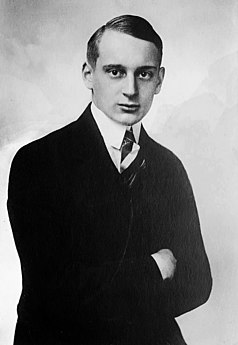

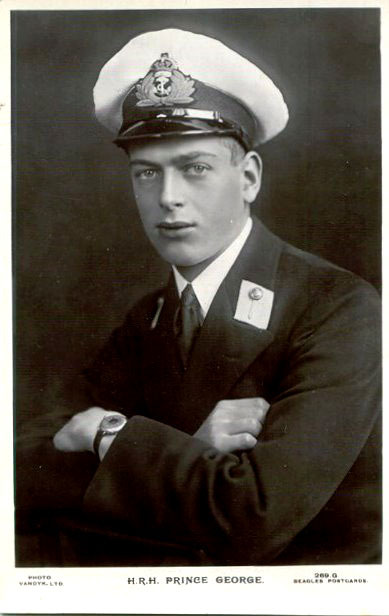
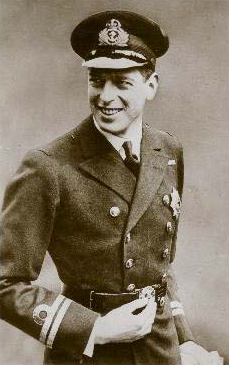
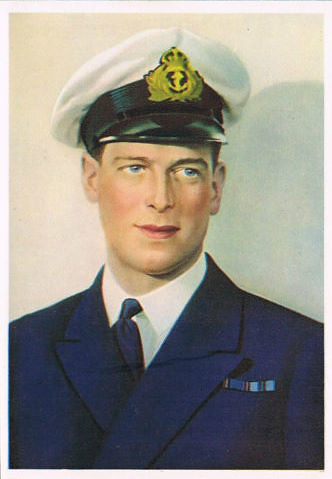


No comments:
Post a Comment